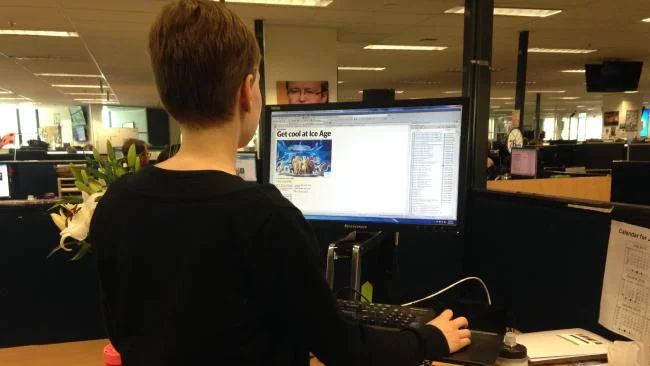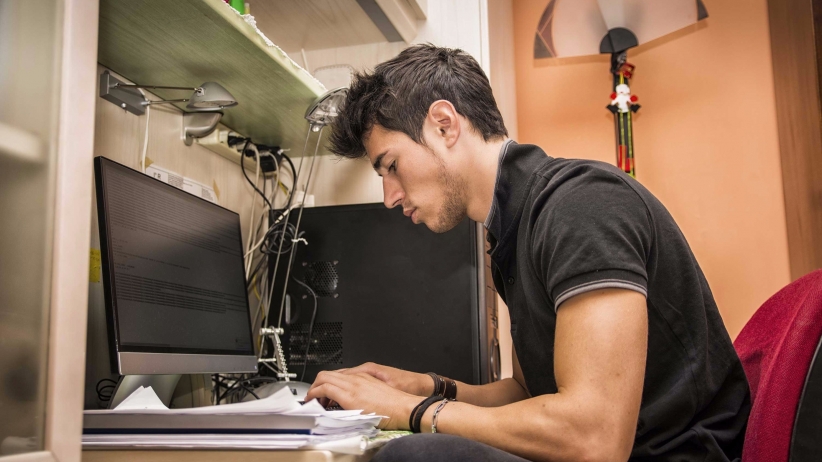Almost all companies talk a good game about workplace flexibility these days. Yet many restrict alternative work arrangements to a subset of the staff. And employees often don’t feel comfortable taking advantage of the programs—in some cases fearing their job ratings and career options will suffer. According to a 2014 study from the Society for Human Resources, organizations were most likely to report that just 1%-25% of their eligible workforce used each of the flexibility options offered.
Nearly 4% of All-Cause Mortality Linked to Excess Sitting
Sitting for more than 3 hours per day is responsible for 3.8% of all-cause mortality, according to an analysis of behavioral surveys from 54 countries. Importantly, reducing sitting time to less than 3 hours daily could increase life expectancy by an average of 0.20 years, Leandro Fórnias Machado de Rezende, MSc, from the Department of Preventive Medicine, University of Sao Paulo School of Medicine, São Paulo, Brazil, and colleagues report in an article published online March 23 in the American Journal of Preventive Medicine.
Read the article on medscape.com > [registration my be required]
Improve Your Workplace: The Benefits of Office Ergonomics
Working in an environment where you feel comfortable during your working hours is extremely important. Not only can you feel much better in such an environment, but you can also be more productive and have plenty of room for improvement. That is why ergonomics is crucial for an effective and successful workplace.
How to Avoid Desk Work Injuries in the Office
It is important to feel comfortable at your office in order to increase your efficiency and protect your health. There are many small steps you can take to create a better work environment for yourself. You can start by implementing the below office ergonomics tips to improve your work day, care for yourself and decrease desk work injuries.
Do Standing Desks Actually Make You Healthier? The Jury Is Still Out
If sitting is the new smoking, is a standing desk the equivalent of giving up smoking? Maybe. Or maybe not. At the moment, we don't have strong evidence to say standing for longer produces health benefits, never mind the standing desk craze.
Sit-stand desks improves health and productivity Sydney University study reveals
NEW research from the University of Sydney has found that workers who use sit-stand desks are just as productive as those who use traditional desks, while also reporting feeling more energized, more productive and being more satisfied.
Yea or Nay? A Nudging, Posture-Correcting App
Sometimes it seems like the app and wearable worlds want to bear the weight of the world's problems on its shoulders. Got a problem? There's probably an app for that.
5 SURPRISING BENEFITS OF SIT-TO-STAND WORKING
The average office worker spends 5 hours and 41 minutes sitting at their desk each day – plus time spent seated during their commute, and relaxing in the evening. As we are becoming increasingly aware of the dangers of an extremely sedentary lifestyle, sit-to-stand working is becoming increasingly popular.
Can Your Office Trick You Into Getting Healthier?
Design experts are working with companies to nudge employees in a healthier direction without them noticing. Active design, the latest trend in office planning, uses workspaces to nudge workers into making healthier choices. That means bathrooms that may feel unduly far from one's desk, or a staircase that's easier to access than the escalator. Companies have increasingly enrolled their employees in voluntary, and not-so-voluntary, initiatives to promote good health and fitness, but active design requires no buy-in. It's invisible, which eliminates a lot of the pitfalls of employee-sponsored wellness programs. "When they're mishandled, wellness programs become platforms for shame, embarrassment, and disappointment," said Danna Korn, chief executive officer of the Sonic Boom Wellness program.
4 Tips for Working Comfortably at Your Desk
It is important to feel comfortable at your office in order to increase your efficiency and protect your health. There are many small steps you can take to create a better work environment for yourself. You can start by implementing the below office ergonomics tips to improve your work day, care for yourself and decrease work related injuries.
3 Changes To Your Physical Environment That Can Make You More Productive
Ernest Hemingway never ate at his desk. He also never read the newspaper, talked on the phone, or opened his mail at his desk. He wrote at his desk. That’s all.
TableAir Launches an App that Works as a Personal Trainer for Any Standing Desk User
Available today, the TableAir app ( http://apple.co/1nariTC ) is designed to help the first time user of a standing table to make an easier and healthier transition to standing more while working. It also benefits advanced users by creating the optimal sit-to-stand schedule to follow. Compatible with any standing desk on the market, TableAir app suggests sitting and standing intervals based on various case studies and recommendations from ergonomics experts.
What Made The Aeron Chair An Icon
Your average furniture designer would like you to believe his products will change your life. Most don't, of course, but for millions of desk jockeys in offices around the globe, one task chair has done precisely that: the Aeron by Bill Stumpf (1936–2006) and Don Chadwick for Herman Miller.
Flexible working and ergonomics; so easy a child can do it
Language may be constantly evolving but if you want to see how a word can lose its meaning quickly, there’s no better example than watching the way some companies can misappropriate it in a misguided attempt to help them sell their products. For example, the big problem with the way some people talk about the term ‘ergonomic’ is that they use it to describe the design of stuff when really it’s about a relationship; that between a person and the things around them. It’s an abstract idea, dependent on a number of variables. And when those variables change, what we mean by good ergonomics changes too. Although the idea has been around for a long time, ergonomics first came to prominence in the wake of the intensive growth in the use of computers. That wasn’t really all that long ago, maybe 25 years or so, but already we are encumbered with a fairly fixed idea of what constitutes an ideal workstation and an ideal posture. We know the standards and directives, we know about training users, we know the sorts of environment people need and the products they should use and we know the consequences of failure.
Antioch school becomes first in region to adopt standing desks
The Belshaw Elementary teacher introduced what's known as standing desks to his classroom last fall, earning the Antioch school the distinction of being the only one in East Contra Costa County in California -- and possibly the entire county -- that has children doing all their lessons on their feet.
Renewed call for office workers to embrace stand up desks
A national health group has called on Canberra office workers to make use of stand up desks and to be more active in the workplace. The call was issued after a survey of 1032 Australian adults found up to a third were sitting at desks or on couches for between eight and 11 hours a day.
Office workers alternately sitting and standing increases their efficiency, Japanese companies believe
A number of companies in Japan believe efficiency increases if their employees alternate between sitting down and standing up on the job, and, in many cases, workers do not even have to leave their desks to do both.
Two new Flexible Standing Desk Options
If you've made a New Year's Resolution to get up and be active more often, switching to a standing desk makes for a reasonable action item. As it turns out, standing up all day in the office doesn't work for everyone, so it's wise to find a flexible option that allows for smooth, swift changes in position—at a moment's notice. Here are two new, quite different offerings to help achieve your 2016 goal of sitting less.
Delivering the low-down on the sit-stand workstation phenomenon
While the UK, US, Australia and other nations continue to treat them as something of a novelty, across Sweden, Norway and Finland, over 80 per cent of office workers use sit-stand desks. Offering employees a height adjustable work station is now mandatory in Denmark. However, sit-stand working is still in its infancy in the UK, with only 2 per cent of similar workers having access to variable-height workstations. Given the huge amount of news coverage devoted to the subject of sedentary lifestyles in the last couple of years, ‘sit-stand’ and ‘active working’ have become buzz terms in UK workplace design. The ‘On Your Feet Britain’* campaign has raised awareness of the health perils risked by the many Brits who spend an average of 8.5 hours a day sitting, whether at their desk or slumped in front of the telly. Inevitably, savvy employers will be asking themselves if they can afford to ignore the problem.
How sitting all day is like living in space
Our bodies are designed to work against gravity every moment of the day. Walking, sitting, sleeping, standing, running… at all times, gravity is pressing its forces against our bodies, making our muscles and our bones strong. We are designed to move: nearly 60% of our skeletal muscles are dedicated to opposing gravity.

























